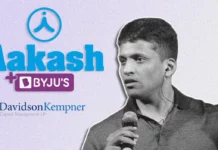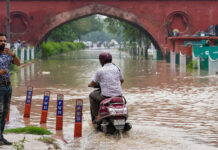
Since independence, if anything has changed on time in India, it was only her government. Be it Congress or BJP, none of them have taken the plight of the masses into their consideration. All these political parties have visible histories of self-aggrandizement, be it an old 2g spectrum scam or a latest Rafale deal controversy. The issue of the basic necessities of life (roti, kapda makan, as captured by legendary 1947 film) is still one of the significant issues faced by India, even after the following planning as a strategy for development after independence.

DOUBLE EDGED SWORD
Numerous social researchers, financial specialists, and lawmakers speculate the young lump as a double-edged sword. Make use of its potential, and you witness higher growth and harmony- a double dividend. Waste it, and you incur less growth and social strife- a double jeopardy.
India today has more than 50% of its population below the age of 25 and more than 65% below the age of 35. Almost all of us take pride in calling our nation a ‘young nation’. However, have we ever wondered what is the condition of India’s youth today? They are directly impacted by the grinding poverty, mass unemployment, wealth and income inequalities and so on. Problems emanating from every corner of the so-called world’s largest democracy have increased youth’s frustration, which has resulted in what could be defined as- ‘criminalization of youth’.

JUVENILE DELINQUENCY
An eight-year-old boy was allegedly sodomized by a youth in Katoli town, UP. A 22-year-old paid with his life for intervening in a fight between a minor and his cousin in east Delhi’s Trilokpuri. The UT police have arrested two persons including a juvenile for theft and burglary cases. According to the Gurugram police data, there are around 27 cases registered under the POCSO Act until October 2018 that are under investigation.
These are just a few recent disturbing incidents, which shocked India and revealed how crime is becoming a dominant fact of youth life. Such events shook the conscience of every citizen and simultaneously exposed the hollowness of the tall claims of ‘sabka sath sabka vikas’.
Juvenile delinquency has been defined as “the habitual committing of criminal acts or offences by a young person, especially one below the age at which ordinary criminal prosecution is possible.”

Juvenile Delinquency is one of the significant issues of deviation which the youth of practically all the modern social orders of the world are confronting. These criminal acts are committed mostly by teenagers, which is a serious matter of concern. The future of a country is determined by how progressive the youngsters are. In such a scenario, the future of India is clearly very bleak and rather dangerous, considering an ocean-full of youth population we have.
CRIMINALIZATION OF YOUTH
From the outset of human civilization, consistently changing social conditions have significantly affected the procedure of a kid’s mental advancement, which to a great extent, relied upon specific social settings and the underlying cultural attitude towards children.
This growing trend of criminalization of youth is too severe to be snubbed. In the present-day scenario, Indian teens have been drifting towards crimes possibly because of the following reasons:
-
FAILURE OF INDIAN JUDICIARY:
The youth of India has realized the incompetence of the Indian judiciary and hence is misusing the gaps between laws and enforcement. ‘Justice delayed is Justice denied’, it stands true in Indian context wherein no case serves punishment to the wrongdoers within a reasonable time-frame. Even if a person reports about some crime committed against him, complain to detention isn’t a smooth journey.
Repetitive summons from the court, spending too much on lawyers and daily proceedings, collecting proof to prove your innocence and detainee’s crime is such a tiresome process that the complainant almost feels exploited in the process. Laws have failed to serve the purpose of deterrence. Criminals have become fearless, and as a result, the common man has lost faith and trust in the Indian judiciary.
Also, crimes are being committed daily on such a substantial basis especially in big metropolitan cities that it has gone out of control of police authorities and courts to serve justice in such a less time frame. This problem gets aggravated due to a limited number of judges and lawyers in the courts.
The juvenile justice system in India has not really been much effective either in granting punishment or as a reformatory mechanism. The problem with India is that laws are well-spelled out, but their enforcement is lagging far behind.
Some people argue that if someone has the audacity to commit heinous crimes like rape, murder he/she cannot be viewed from the lenses of a juvenile. One such incident which sparked off the debate was the December 16 Delhi gang-rape case, where a minor was held guilty for rape and murder was sent to a reform home for three years as
The police system needs an immediate and large number of reforms. The problem of delay in verdicts was sought to be tackled by establishing fast-track courts, but nothing much has been delivered to address the grievances of the masses.
2. BROKEN HOMES
Norms, values, models of conduct, and other imprints radiate from the family unit, and these elements create an internalized “blueprint” for the youngster character, convictions, and attitudes. For example, a causal relationship exists between marital instability and delinquency, so that the manifestations of a discordant marital environment such as stress, estrangement, coldness, and unhealthy boundaries produce a disproportionately high incidence of delinquent behavior in children who grow up in this environment.
Broken homes due to the death of anyone parent, prolonged illness, desertion, divorce are also established reasons for delinquent behavior in youth. No watch over children’s behavior tends to increase their chances of going astray. In such an environment, youngsters are more likely to get more exposed to drugs, pornography, illicit sex, gambling and so on. Also, it can’t be said that every teenager from a broken family is necessarily a criminal.

3. POVERTY:
Poverty is one of the main reasons for the growing criminalization of Indian youth. Youth frustrated by poverty and vulnerable to the excesses of consumerism tend to look for shortcuts to earn more money in less time and, thus, consciously or unconsciously join hands with small gangs and become delinquents. Poverty can also be attributed to one of the main reasons for the Maoist challenge in India.
However, it is important to understand that not every poor person is necessarily a criminal or a Maoist. The government’s policies are to be blamed to a large extent here. Successive Indian governments have been ignoring the interests of these poor masses, and only at the time of elections visit their zopadpattis to have a roti in their dilapidated huts. These tactics help them fetch votes, but after winning, how many MPs have raised the issue of poverty, farmer’s suicides, terrible living conditions, miserable slums in the parliament.
4. UNEMPLOYMENT:
…milega ilm-e-jihalat-numa se kya un ko nikal ke madrason aur universitiyyon se ye bad-nasib na ghar ke na ghat ke honge main puchhta hoon ye taalim hai ki makkaari karodon zindagiyon se ye be-panah dagha…
(What can possibly the young gain from the useless knowledge dished out by madrasas and universities? Dazed and confused, they appear, these wretched souls Is this education or a pure scam. I wonder What treachery with countless lives!)
Firaq Gorakhpuri, an exuberant Urdu poet, wrote these lines about four decades ago; however, they have a stirring relevance in contemporary times.
The leaked report on periodic labour force survey (PLFS) from July 2017 to June 2018 concluded that joblessness was at the highest level in 45 years in India. (The Hindu)
Be it Skill India or Make in India, the statistics of India’s unemployment are still depressing. When the educated youth is unable to find employment of their choice, they tend to become vulnerable to extra-legal means to earn money. Their frustration results in criminal tendencies. There has been a considerable increase in tech-savvy young criminals, thereby increasing incidences of cyber-crime all over India.
5. MEDIA:
It has also added to the magnitude of delinquency. Obscene films, television, literature provokes sexual and other impulses in the young population. To fulfill this ‘thirst for adventure,’ they knowingly or unknowingly fall into activities like smoking, drinking, gambling, early sex, pick-pocketing, thefts and many more.
Free and widely accessible internet without proper cyber knowledge and online etiquette is a perilous idea in the Indian context.
CONCLUSION
The policies of the government must be focused on the all-round development of all the sections of the population so that the frustration among the youth could be brought down. The problem of ‘educated unemployed’ needs to be effectively tackled by the government. Introduction of Welfare-oriented policies for the masses. Training of the police according to the level of crimes taking place. Traditional methods are no more successful in tracking down hi-tech law offenders. The lack of moral values in youngsters need to be addressed both in family and schools. Psychologists and counselors must be available in all schools and colleges to help children vent out their anger and channelize the same into something productive.















































